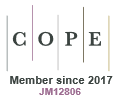Turkish adaptation, validity and reliability study of the sexual and reproductive empowerment scale for adolescents and young adults
Sıla Gül A * and Nuriye Büyükkayacı Duman B
A * and Nuriye Büyükkayacı Duman B
A
B
Abstract
This reliability and validity study aimed to adapt the Sexual and Reproductive Empowerment Scale for Adolescents and Young Adults (SRES-AYA) into Turkish, and to introduce it to Turkish society by conducting validity and reliability studies.
The sample consisted of undergraduate students between the ages of 18–24 years studying at a university. A 19-question personal information form and the 23-question SRES-AYA were used to collect data on the topic. Data were collected through face-to-face interviews in January 2023. In the scale’s validity phase, language, content and construct validity were examined, respectively. Internal consistency and time invariance were reviewed in the reliability stage of the scale. The data were analysed with the SPSS for Windows 22 package program and the LISREL 8.80 package program.
The content validity index of the scale was found to be 0.99. The Kaiser–Meyer–Olkin test was 0.874, and Barlett’s test of sphericity significance level chi-squared = 3511.034, P = 0.000. In the exploratory factor analysis, the factor loadings of all items were >0.40, the variance explained was 74.668%, and no items were removed from the scale. The fit index values evaluated in the confirmatory factor analysis were chi-squared/s.d. = 3.71, goodness of fit = 0.98, adjusted goodness of fit = 0.97, comparative fit index = 0.99, root mean square error of approximation = 0.074, standardized root mean square residual = 0.053, and path diagram factor loadings between 0.41 and 0.91, all of which were found to be within the acceptable range. Cronbach’s alpha was 0.913, and Spearman’s Rho coefficient was 0.893.
The scale was determined to be a valid, highly reliable instrument suitable for Turkish society.
Keywords: adolescents, nursing, reliability, reproductive health, sexual health, Turkish adaption, validity, young adults.
References
1 Upadhyay UD, Danza PY, Neilands TB, et al. Development and validation of the sexual and reproductive empowerment scale for adolescents and young adults. J Adolesc Health 2021; 68: 86-94.
| Crossref | Google Scholar |
2 Vogel JP, Pileggi-Castro C, Chandra-Mouli V, et al. Millennium development goal 5 and adolescents: looking back, moving forward. Arch Dis Child 2015; 100: S43-S47.
| Crossref | Google Scholar | PubMed |
3 Woog V, Susheela S, Alyssa B, et al. Adolescent women’s need for and use of sexual and reproductive health services in developing countries. New York: Guttmacher Institute; 2015. Available at https://www.guttmacher.org/sites/default/files/report_pdf/adolescent-srhs-need-developing-countries.pdf
4 Aktepe E, Atay PM. Child marriages and psychosocial outcomes. Psikiyatr Guncel Yaklasimlar 2017; 9(4): 410-420.
| Crossref | Google Scholar |
5 Yıldırım F, Erbil N. Knowledge level of university students in Turkey about sexually transmitted diseases: a systematic review. Androl Bull 2021; 23(3): 179-186.
| Crossref | Google Scholar |
6 Karakurt P, Tuncer SK. Determination of university students’ attitudes towards sexual health: the example of nursing students. Gevher Nesibe J Med & Health Sci 2022; 7(20): 131-139.
| Crossref | Google Scholar |
7 Gursoy E, Yesildere Saglam H. Factors affecting sexual health-seeking behaviors of young people. J Public Health 2022; 30(12): 2899-2910.
| Crossref | Google Scholar |
8 Apay E, Nagorska M, Akpınar RB, Celik AS, Binkowska-Bury M. Student comparison of sexual myths: two-country case. Sex Disabil 2013; 31(3): 249-262.
| Crossref | Google Scholar |
9 Alsop R, Bertelsen M, Holland J. Empowerment in practice: from analysis to implementation. Washington, DC: Directions in Development; 2006. Available at http://hdl.handle.net/10986/6980 [cited 10 April 2025]
10 MacCallum RC, Widaman KF, Zhang S, et al. Sample size in factor analysis. Psychol Methods 1999; 4(1): 84-99.
| Crossref | Google Scholar |
11 Yurdugül H. The use of content validity indexes for content validity in scale development studies. In ‘XIV. National congress of educational sciences, pamukkale university faculty of education,’ 28–30 September, Denizli: Pamukkale Üniversitesi Eitim Fakültesi; 2005. pp. 1–6. Available at http://yunus.hacettepe.edu.tr/~yurdugul/3/indir/PamukkaleBildiri.pdf
15 Guad RM, Mangantig E, Low WY, et al. Development and validation of a structured survey questionnaire on knowledge, attitude, preventive practice, and treatment-seeking behaviour regarding dengue among the resident population of Sabah, Malaysia: an exploratory factor analysis. BMC Infect Dis 2021; 21(1): 1-11.
| Crossref | Google Scholar |
16 Yaşlıoğlu MM. Factor analysis and validity in social sciences: application of exploratory and confirmatory factor analyses. Istanbul Uni J School Bus 2017; 46(2): 74-85 [in Turkish with an English abstract] Available at https://dergipark.org.tr/tr/pub/iuisletme/issue/32177/357061.
| Google Scholar |
18 Çapık C. Use of confirmatory factor analysis in validity and reliability studies. J Anatolia Nurs Health Sci 2014; 17(3): 196-205 Available at https://dergipark.org.tr/en/pub/ataunihem/issue/2666/34715.
| Google Scholar |
20 Sürücü L, Maslakçı A. Validity and reliability in quantitative research. BMIJ 2020; 8(3): 2694-2726.
| Crossref | Google Scholar |
22 World Health Organization (WHO). Sexual and reproductive health and rights: a global development priority. 2014. Available at https://apo.who.int/publications/i/item/sexual-and-reproductive-health-and-rights-a-global-development-health-and-human-rights-priority#:~:text=Sexual%20and%20reproductive%20health%20and%20rights%20encompass%20efforts%20to%20eliminate,and%20cervical%20cancer%2C%20violence%20against [cited 15 April 2025]


